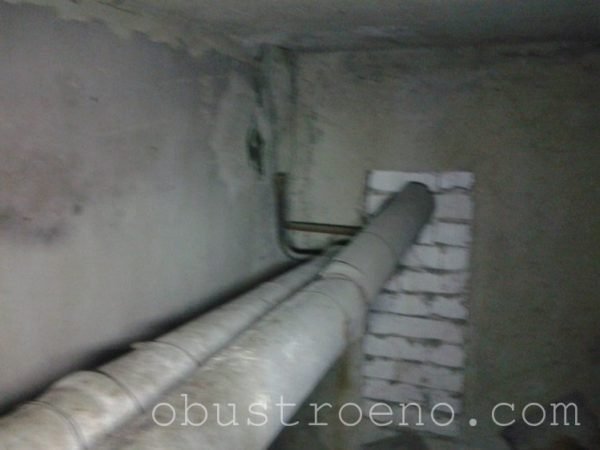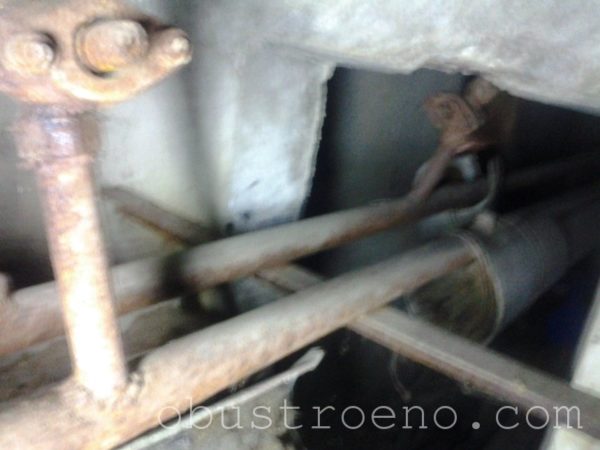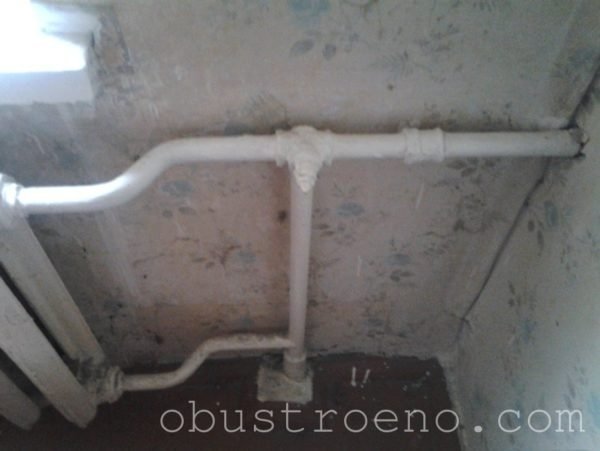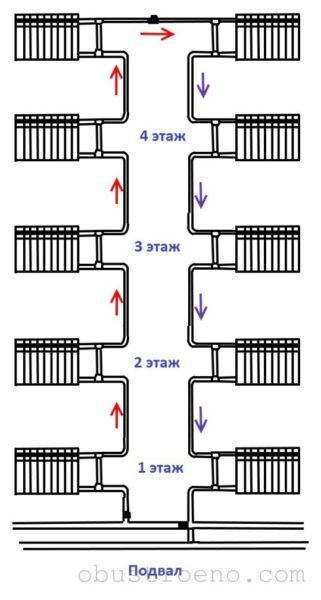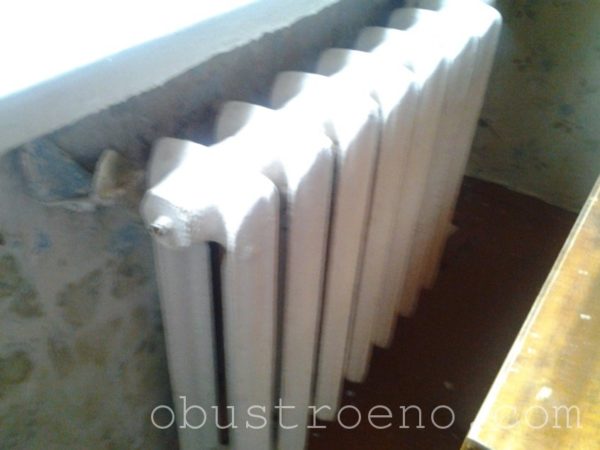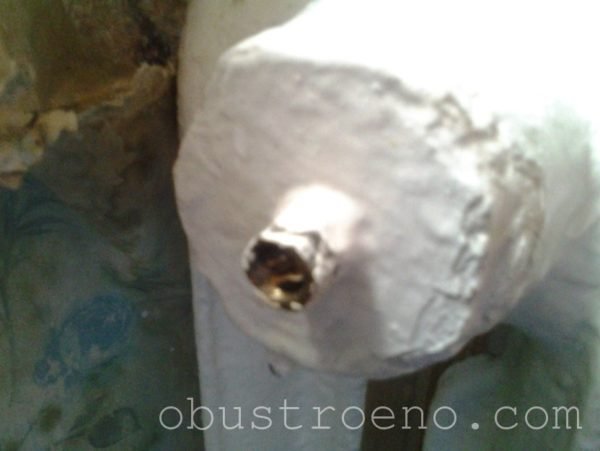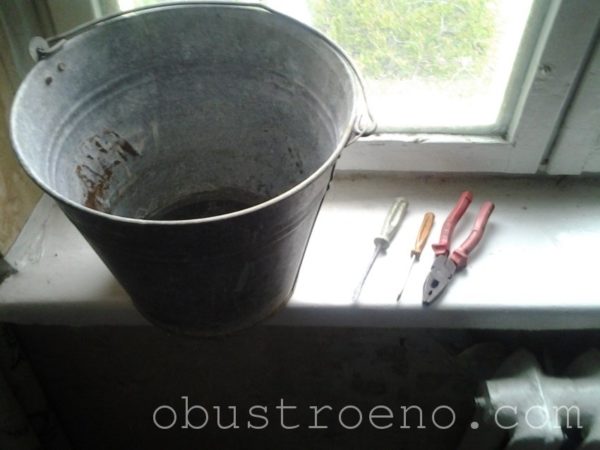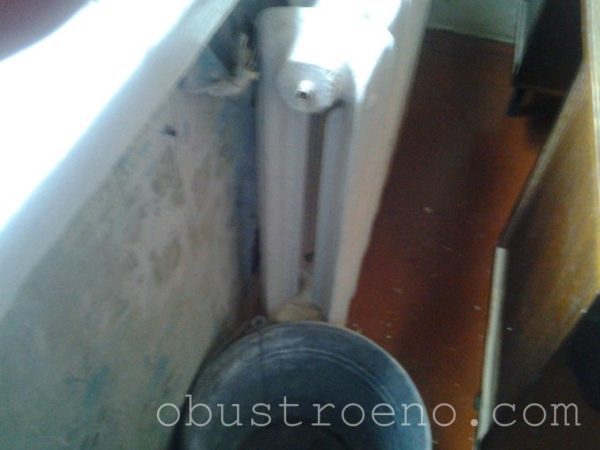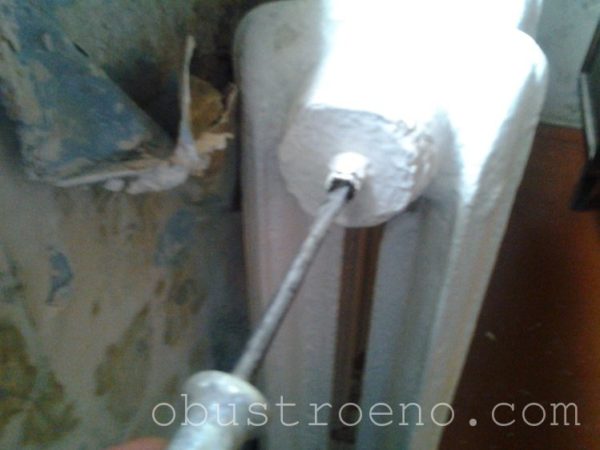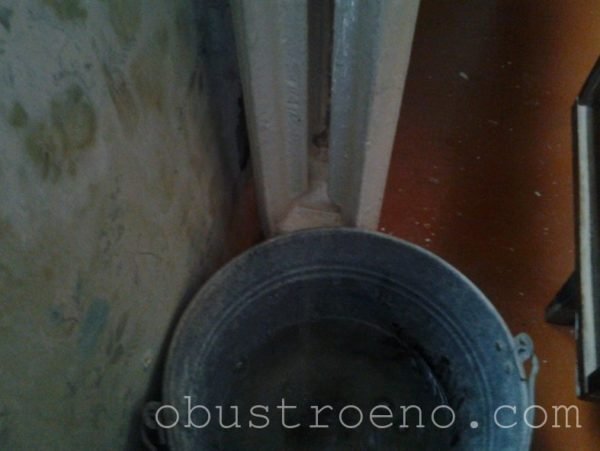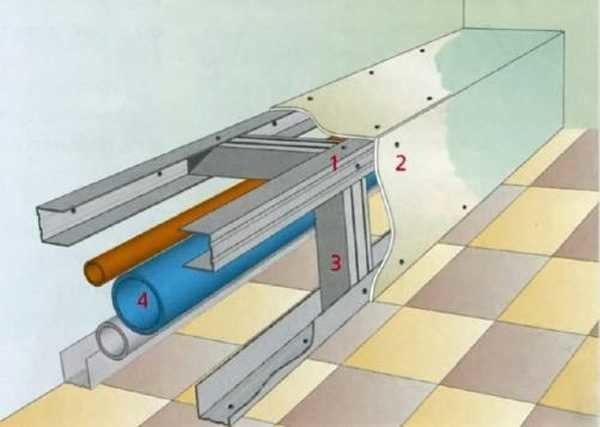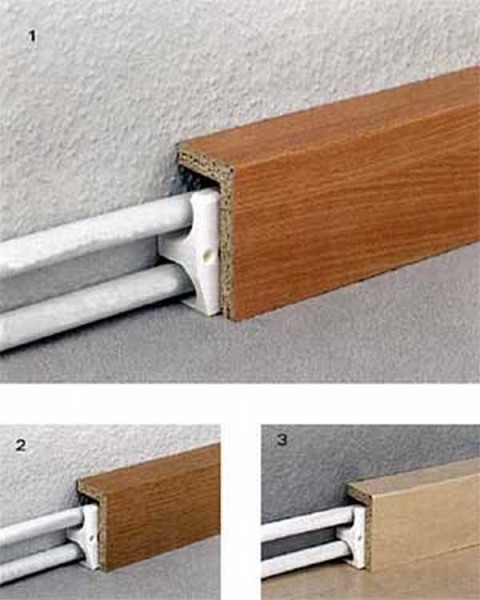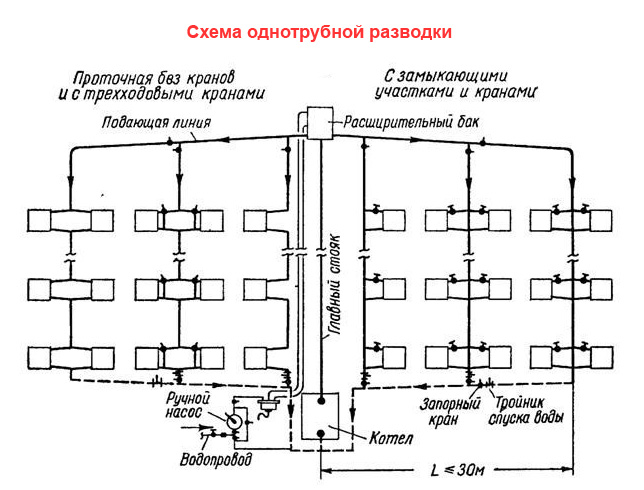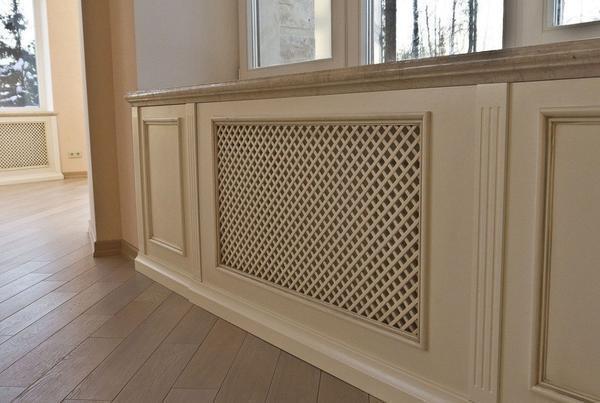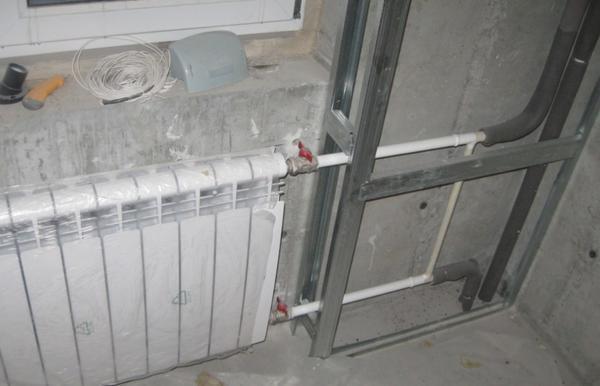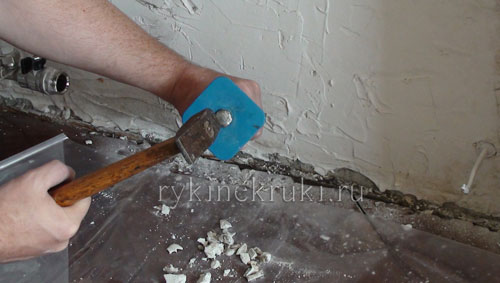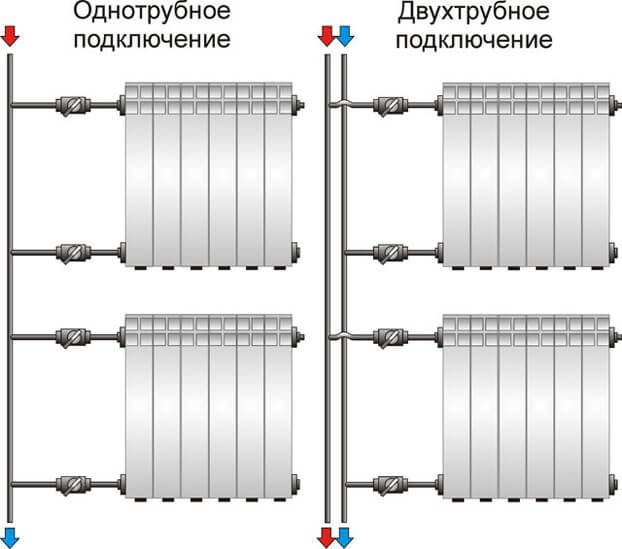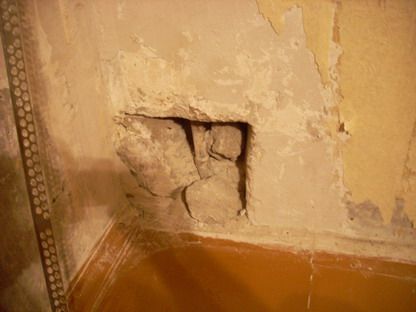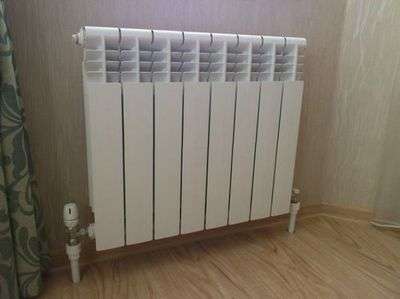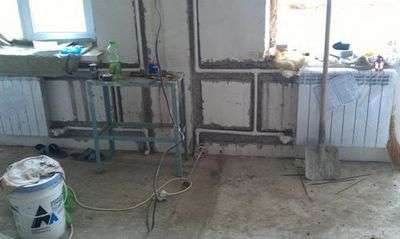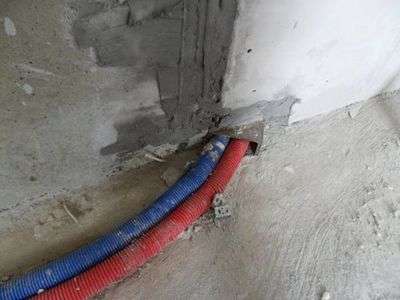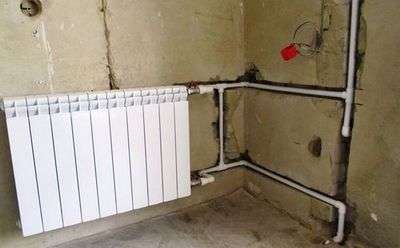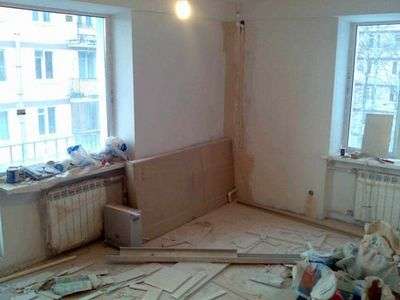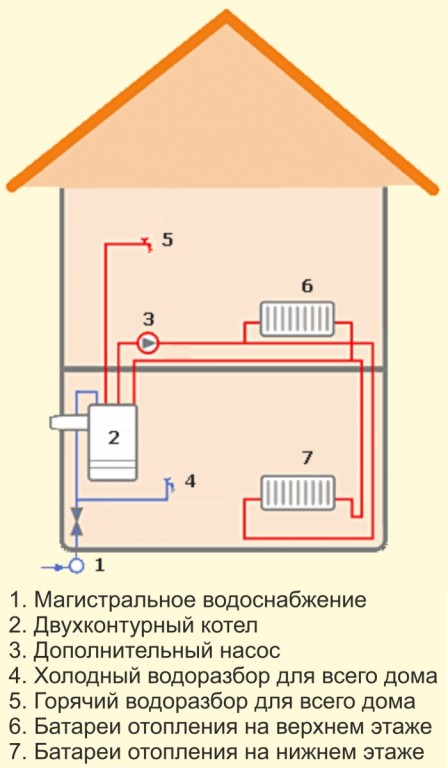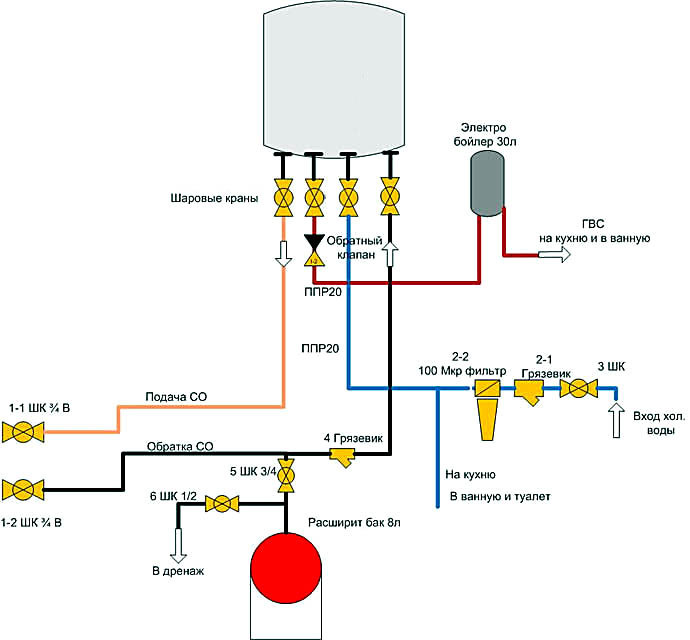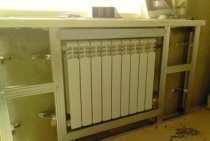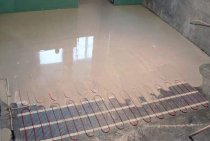Problem
The main problem that my relatives told me about was the absolutely cold radiators in two adjacent rooms, while in other rooms the radiators got noticeably warmer with the start of the heating season.
- In rooms with warm radiators, the average daily temperature was +17C;
- In rooms with non-working heating + 13C.
As they say, feel the difference...
For several days, calls from neighbors and relatives in the heating network ended in approximately the same way - nothing, because. the house is cooperative, and its maintenance is not within their competence, with the exception of emergency cases.
And for a cooperative of 60 apartments (4 entrances), where more than half of the residents are people of deep retirement age, it was unprofitable to maintain its permanent plumber. The part-time specialist only made sure that there were no leaks during the start-up of the system, and nothing more.
Searching of decisions
Upon arrival, the first thing I do is check the taps on the radiators and on the bypasses - all in the open position in both rooms. I open the Mayevsky taps on each radiator - a thin stream of water informs that there is pressure in the system, but the radiator is not airy. But you need to find out if there is a coolant in the system at all.
For this purpose, I go to the basement of the house. From the elevator node I determine the direction and find "my" supply and return pipes.
Here is our highway.
Having reached the location of the apartments of our entrance, I see two pipes - supply and return. To the touch, both pipes differ quite noticeably, so it was not difficult to determine that the colder one is the return line.
In the foreground is the reverse.
I use my hands again - both risers are cold, although literally a meter from this site the temperature was more than comfortable. The reason is the airing of the system on the upper fifth floor, which is why the coolant does not circulate.
I leave the basement and go to get acquainted with the neighbors of the upper floor, along the way asking other residents about the presence of stopcocks and their condition. As you would expect, everyone has cast iron radiators installed 30 years ago.
The fifth floor is a jumper between the rooms.
In Khrushchev houses there is no technical floor, so the coolant is supplied from below from the basement. For clarity, the operation of the heating system, I propose to consider the diagram below.
Red arrows show the direction of movement from the supply, blue - the return.
We return to the apartment of the fifth floor. Cast-iron radiators for 12 and 7 sections were installed in two rooms of the pensioners' family. It was they who had to be aired.
The reason for the lack of heat is the accumulated air inside the radiator.
The only method available for this is with the help of a nipple (a prototype of the Mayevsky crane) embedded in the radiator cap.
Upcoming job.
- Old galvanized bucket of 12 liters;
- pliers;
- Two screwdrivers with a flat sting;
- A few floor rags - splashes will be inevitable.
Here it is our simple tool.
I put a bucket under the radiator.
Since a lot of splashing is expected, I provide a place to work around the radiator - I remove the flower pots and move the furniture away
Then I take a screwdriver and carefully, so as not to lick the edges, unscrew the screw counterclockwise
The effort has to be excessive.
- The old system did not succumb on the first try, I had to use pliers - with their help I turned the screwdriver until the screw moved from its stuck place;
- The hiss of air marked the beginning of the release of the airlock. Within 3-4 minutes, the air left the radiator, after which cold water flowed in a thin stream;
- Having adjusted the screw in such a way that water poured into the substituted bucket, I gave time - about half an hour, when the bucket was half full, the temperature of the water changed from ice to warm, after which I screwed the screw back.
How not to remember the classics: “Oh, the warm one went ....”
I did the same operation with the cast-iron battery in the other room. A few hours later, the apartments became noticeably warmer - the thermometer showed a rise of a couple of degrees. Of course, there is no need to talk about a complete solution to the problem of cold in an apartment, because.the temperature of the coolant is far from 75C, but it is not yet a severe winter outside the window.
I hope that my experience will be useful to some of you. If the symptoms are similar, negotiate with the neighbors of the upper floor and air the riser before the onset of winter. Good luck, comrades!
How to hide heating pipes in the bathroom
The bathroom differs from all other rooms in high humidity. This will be the feature: you need to use materials that are not afraid of moisture. The solutions here are basically the same: hide them in the wall or make a box for them. Naturally, you need to lay pipes in the wall before laying the tiles, but the box can be built after.
How to hide heating pipes in the bathroom in a box
Hide heating pipes under the baseboard - one of the ways to get by with "little blood"
The principle of construction is no different: you make a frame, and then sheathe it. But the difference will be in the materials. You need to use galvanized profiles, and drywall is moisture resistant. Even taking into account the fact that you will stick tiles on top. The tile will most likely have to be cut to fit the frame format (or the dimensions of the frame should be made taking into account the size of the tile), and the corners and cuts can be closed with special corners to match the tile, contrasting color, white, etc. - the choice depends on your desire and bathroom design.
One of the panels of the box can be made removable. It can be held on magnets, corners, stops. This will not violate the aesthetics and provide access to communications.
There is an option that, if suitable, will allow you to get off with “little blood”: there are special plastic plinths-boxes. So if the heating pipes in the bathroom or another room run along the wall above the floor, you can hide them in such a baseboard.
If none of these methods suits you for some reason, you can try decorating them.
The principle of building a heating system
Speaking about the principle of operation of the heating scheme for multi-storey buildings, a few words should be said about its construction. In fact, it is quite simple. Most modern houses use a single-pipe centralized heating scheme for a five-story building or a house with a smaller / larger number of floors. That is, the heating scheme of a 5-storey building is a single (for one entrance) riser, in which the coolant can be supplied both from below and from above.
In accordance with the location of the supply element, two types of coolant orientation are also distinguished. So, provided that the supply pipes are located in the basement, there is an oncoming movement of the coolant. And if the supply element is in the attic, then it is a passing direction.
Many are interested in how the radiator area is determined for a particular room. In fact, everything is quite simple - it is only necessary to take into account the cooling rate of the coolant (water) used.
Most of us mistakenly believe that the higher the house, the more complicated and confusing the heating scheme of a multi-storey building is. But this is a wrong opinion. In fact, in general, the number of apartments that need to be heated affects the calculation of heating in an apartment building.
1.
2.
3.
4.
5.
An apartment in a high-rise building is an urban alternative to private houses, and a very large number of people live in apartments. The popularity of city apartments is not strange, because they have everything a person needs for a comfortable stay: heating, sewerage and hot water supply. And if the last two points do not need special introduction, then the heating scheme of a multi-storey building requires detailed consideration. From the point of view of design features, the centralized one has a number of differences from autonomous structures, which allows it to provide the house with thermal energy in the cold season.
How to hide heating pipes in a private house with decoration
Hiding pipes in a wall or duct significantly reduces the heat transfer of heating elements.Sometimes these measures are contraindicated. That is why pipe decor is widely used to close communications.
In this option, you can safely listen to your imagination. The main thing is that the initial effect harmoniously fits into the interior of the room. You can simply paint the pipes to match the color scheme of the room.
Paint requirements:
- Mechanical resistance;
- Thermal strength;
- Not toxicity.
As a decor, you can use jute or hemp rope. But this will reduce the heat transfer of the pipes. You can also try split bamboo. You can additionally decorate with branches and leaves, creating a branch. Highly located pipes can be closed with curtains.
For painting communications, water-dispersion, acrylic or alkyd enamel is used.
It is easier to hide pipes at the stage of laying communications. Then it becomes possible to mount the system as discreetly as possible. Also in this case, it becomes possible to make a warm floor.
How to hide heating pipes in an apartment using a box
The box is considered a good option when the heating system is already installed. You can sheathe the casing with plastic, drywall, wood. Before work, you should make sure the integrity of communications.
Necessary tools for installation:
- Metal profile;
- Self-tapping screws with dowels;
- Material for the box;
- Screwdriver;
- Drill;
- Scissors for metal.
First you need to make the frame of the box. The material of manufacture is fixed with self-tapping screws. First, markup the location of communications. Take into account the dimensions of the pipes, the thickness of the material and the interval between the walls of the box and communications.
Do not install pipes close to the box. It is optimal to leave a distance of 3 cm.
Next, install the building profiles. Then fix the guides. To fasten the profiles to each other, cutters are used.
Then mount the corner profiles. If the interval between the racks exceeds 25 cm, then additional jumpers should be made. If the height of the racks is more than 150 cm, then horizontal jumpers are mounted. When the frame is ready, begin its design. Bevels are removed from drywall before installation. But if tiling is planned in the future, then this process can be omitted.
They start installing the walls of the box from the side parts and move towards the central ones. After installing the walls, the box must be trimmed decoratively. To do this, use tiles, wallpaper paint.
If you want to hide the batteries, you can build a false wall. The execution technology is similar to the box. First, the frame is made, then the walls are sheathed. A significant drawback of this method of decorating is a decrease in the area of \u200b\u200bthe room. If you don’t want to bother with installing these elements, then you can purchase a ready-made box in a hardware store.
Primary processing of the wall behind the battery
The picture above clearly shows that the wall behind the battery is not processed. If you remove the battery for the first time, then most likely, there will be not a white at all, but a gray dusty wall, with old, ingrained paint. It is clear that wallpaper cannot be glued on such a wall right away. If you decide not to glue the wallpaper, but to make the wall cladding with a decorative panel, as can be clearly seen in the pictures in the article, then in any case, the wall needs to be treated at least in order to remove the smells of old walls and old repairs (advice from my personal experience ).
So where do you start? We begin to beat off extra bumps on the wall, the remnants of old putty and paint with a hammer and chisel. We especially pass in those places where the plinth should be attached to us.
Estimated time around 1 hour
:
Then it is necessary to remove all debris and prime the wall (see Rubric).
We primed the wall 2 times. The priming itself takes 10 minutes, but the drying time of each layer is 1.5 hours.
Total: cleaning + wall primer + drying time is about 4 hours
.
Design features of the heating circuit
In modern buildings, additional elements are often used, such as collectors, heat meters for batteries and other equipment. In recent years, almost every heating system in high-rise buildings is equipped with automation to minimize human intervention in the operation of the structure (read: "Weather-dependent automation of heating systems - about automation and controllers for boilers with examples"). All the described details allow to achieve better performance, increase efficiency and make it possible to distribute heat energy more evenly throughout all apartments.
Battery replacement options
-
- Batteries with pipes are built into the facade walls.
Most likely, any work in this case will be strictly prohibited. After all, the design of the building includes heat from these pipes along the facade. And any individual changes are simply unacceptable. The only solution would be to order a rework of the heating system throughout the house with insulation of the outer walls. It will be necessary to break through the ceilings, equip the risers and only then connect new radiators to them.
-
- Piping in inner slabs.
There are serious restrictions on load-bearing walls. As a rule, batteries were embedded in them. And any demolitions or penetrations are not allowed. The only thing that can be done is to find “mortgages” in the corners of the plates. These are such pockets in concrete, where the slabs and heating risers were connected to each other. These places are easy to find by tapping. After connecting the pipes, the voids were filled with a solution that sounded very different from factory concrete. Then the coil in the wall is tightly closed and a new radiator with a bypass is inserted.
-
- The batteries are inside, but outside there are riser outlets.
In some series of houses, although the batteries are in the walls, the bends of the pipes are visible in the corners of the rooms. Everything is much simpler here. Getting close to them and crashing into the system will not be difficult. In addition, you do not have to make a project and go through lengthy approvals.
Whatever the situation, you need to clearly understand that the battery embedded in the wall is in fact the common riser of the entire entrance. And any changes on it affect the quality of heating for all neighbors from above and below. Whatever is done, you can not block the riser or narrow it.
Only a specialist can accurately determine the series of a house and the configuration of pipes inside the panels. It will be necessary to raise documents of Soviet projects. It will be possible to find on your own only by touch approximately where such a battery is laid.
All this work will cost a lot of money. And problems with heat can be completely different.
Before “taking out” the batteries from the walls, you should contact the house management company and demand to identify the reasons for the lack of heat in the rooms. It is possible that an air lock has simply formed in the embedded pipes or there are shortcomings in the sealing of the seams. Or, from time to time, the insulation inside the panels simply decayed. In many cases, they will fix problems without altering the heating system or will be forced to install an external battery for free.
Heating system wiring diagram
When taking out heating devices inside the room or during repair work, the question often arises about the piping layout. Standard schemes: beech P or inverted beech Sh. Which scheme is implemented in your apartment depends on the panel house.
Two risers are located next to each other. Sometimes they are separated by a wall separating the rooms. In this case, the riser looks like the letter T, 2 risers are located on one side and one on the other. They go through the walls. Conclusion of the connection zones of structures - ceiling and floor.
Heating pipes built into the walls are usually made of metal. The advantages of this material are durability and reliability. In addition, during repair work using a puncher, you don’t have to worry that the drill will damage the structure.In contact with metal, you will quickly be able to understand that in this place you need to stop work.
Pros and cons
To rejoice or prepare for a harsh winter period if you have moved to a panel house with heating pipes embedded in the wall? Consider the pros and cons of this option. Among the main advantages it should be noted:
- Aesthetics. Structures placed inside often spoil the overall appearance of the apartment. The system inside the partition allows you to save the design of the room without this "thorn in the eye";
- Space saving. This factor is especially relevant for small apartments. Heating elements do not occupy free space, which is already small;
Efficiency. Do not be afraid that all the heat will go into the partition. Heating elements in such structures are designed for high power, which is enough for high-quality heating of the room. In addition, calibrated diameter designs are used to improve system efficiency and the most appropriate wiring pattern is applied.
However, heating pipes in the wall also have disadvantages:
- In some cases, low power. The capacity of the system largely depends on the service provider. Sometimes there is not enough heat from the heating elements;
- Difficulties with repairs. In the event of an emergency, getting to the structure will not be easy. However, such unforeseen circumstances occur very rarely;
Problems when working with a partition
If you want to drill through a partition, you need to do this with great care so as not to hurt the structures. To do this, you need, first of all, to study the wiring diagram in your house;
Difficulties with cosmetic repairs in the apartment
Hot structures can cause cracking of the plaster. Wallpaper may also come off.
It is difficult to say unequivocally how efficient and convenient heating pipes in the wall will be. It all depends on the personal preferences of the person. Some want to bring the heating pipes inside the room, while others, on the contrary, wall them into the wall. But, in any case, it should be remembered that work with risers must be previously discussed with the relevant services. Unauthorized intervention in the design scheme can entail a considerable fine.
Pipes will never add sophistication to a design
Even the most thoughtful design can easily spoil the open heating pipes on the walls. They are out of harmony on their own, and if the highways also intersect, then the room becomes like a utility room or a technical room. You can avoid such a situation if you think in time how to hide the heating pipes from prying eyes.
Ways to install heating in the walls of the room
Scheme of piping a double-circuit gas boiler directly.
- Pipelines fixed to the wall or warm water walls are connected to a common hydraulic heating system for the entire apartment or house.
- Cable heating systems are used as an addition to the main heating system, electric or cable. They are a heating cable that is attached to the wall in the form of mats or along a certain path, has an autonomous connection to the network.
- Warm infrared walls are rod or film mats that are attached to the wall and connected in parallel to each other. Typically, such heating in the wall is used as an addition to the main heating system.
Where is the best place to place a wall heating system:
- on the coldest wall of the room or in the corner room;
- the space in the room in front of such a system should not be filled with furniture or hung with carpets.
Wall systems are operated in a temperature regime not higher than 35-40 degrees, it is this temperature level that is considered the most comfortable for the human body.To maintain this optimum temperature, additional insulation of the walls of the room is required to keep heat loss from the room to a minimum.
Installation of heating equipment using plaster coating:
Piping scheme for a double-circuit boiler with a storage boiler.
- To do this, you will need to prepare the wall, clean it, place the wiring and electrical boxes.
- Install the heat mixing unit.
- Stick foam polystyrene plates on the wall, and on top of them make a vapor barrier or apply a foil insulation (for example, penofol).
- Fasten mounting rails to the wall to accommodate the pipeline. If warm walls are mounted in the bathroom, then the heating system can be taken out of the wall surface and used as a heated towel rail.
- Place a serpentine pipeline along the wall, bypassing those areas where the furniture will stand.
- Connect the pipes through the collectors to the heat mixing unit.
- Under pressure greater than the working pressure by 1.5 times, press the pipes.
- Attach reinforcing mesh.
- Cover the wall with a thin layer of gypsum plaster.
- Fasten the temperature sensor under the top layer of plaster.
- As soon as the first layer of plaster dries, immediately apply the second. So that the layer does not crack and does not interfere with heat transfer, the second layer is made of lime-cement and above the pipes its thickness reaches 3 cm.
- To avoid the formation of cracks during heating, it is necessary to make a reinforcement in the form of a thin mesh over the plaster under the putty.
Installation of heating equipment using a false panel:
- Attach heat-insulating material to the cleaned wall - foil-foamed foam or expanded polystyrene.
- To install pipes, reinforce the tires.
- Place the pipeline along the wall, connect it to the manifold cabinet.
- Install a metal frame or already assembled from bars.
- At the end, attach prepared slabs or panels made of drywall, plastic or fiberboard to the frame.
Wall decoration behind batteries. Think about the little things
It turns out that when people make repairs in their apartments, they completely forget that the decoration of the walls behind the batteries is just as important as the decoration of the main walls. And when they finish the work, they realize that the batteries, in fact, have not been completed, the wall behind them is ugly, and of course it needs to be brought into the appropriate form.
Why is this happening? Here are some reasons:
- the heating battery covers part of the wall, so there is no need to do something behind it;
- there will be long curtains from the eaves to the floor and the batteries will not be visible at all;
- decorative screens will be hung on the batteries.
It is difficult to disagree with these points, since they are absolutely fair. But, not every family is able to plan all future repairs, as they say, on a turnkey basis, and many little things are thought out along the way. For example, after the repair is completed, it turns out:
- probably in this room with such wallpaper, blinds are better suited, or short curtains to the windowsill, and not to the floor;
- the room is relatively small in area, and if you hang decorative screens on batteries, they will look very bulky and steal space in the room.
So it turns out that the primary vision regarding batteries has changed. It turns out that there will be neither long curtains nor decorative screens. So what then? A terrible raw wall behind the batteries, which, in the absence of curtains, is very visible? By the way, there are houses where there are 2 windows in the rooms. So 2 scary walls will be visible?
What is the difficulty, you ask? Think of a small piece of wall, it can be done in a couple of days. However, this is an erroneous, at first glance, opinion. If the wall behind the batteries is really crooked or with potholes, then you can’t just stick the wallpaper on it, most likely it will have to be leveled at the very least, which means you will have to mess around with the primer, and with plaster, and with putty.Read my detailed article about. After wallpapering, you must not forget to cut out and, which under the batteries are solid external and internal corners. The most terrible thing is that if you have already completed the main repairs, then the apartment is relatively clean. And just imagine, in a mini-version you will actually have to repeat the entire repair from start to finish with a small piece of wall.
True, I can reassure you a little, since there are certain assumptions that will nevertheless reduce the time.
So let's start. In parallel, I will take into account the time spent on such repairs.
Conclusion
As we can see, there are quite a few options for plastering various surfaces. However, upon a detailed examination of the technology, it turns out that there is nothing super complicated in this.
For example, having figured out how to plaster OSB, even a novice builder can do this work, so there are no impossible tasks when finishing a house with plaster. Additional information on this topic can be obtained from the video in this article.
Very often, during construction work, heating pipes are hidden in the wall, pros and cons
This method of hiding pipes must be studied thoroughly to determine whether this method suits you or not. Otherwise, not only the functioning of the heating, but also the design of the room may suffer.
It is better to make hidden pipe laying at the construction stage. In an already functioning house, this issue is much more difficult to solve. If earlier communications were left fixed to the walls, then a significant plus of a high-quality repair of a modern level is that these options are not acceptable.
